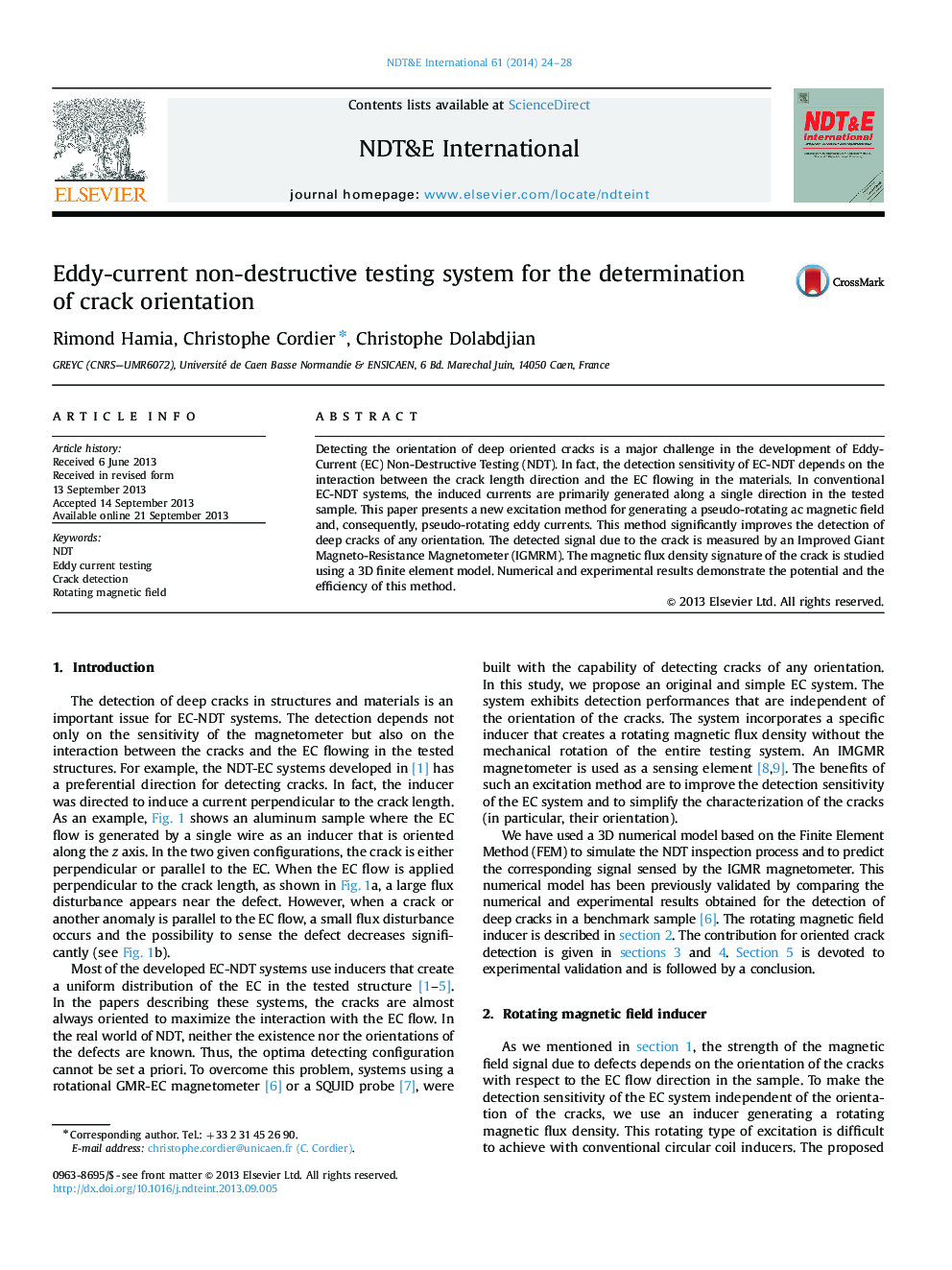| کد مقاله | کد نشریه | سال انتشار | مقاله انگلیسی | نسخه تمام متن |
|---|---|---|---|---|
| 295070 | 511522 | 2014 | 5 صفحه PDF | دانلود رایگان |

• The crack orientation is determined by an original system.
• The excitation method generates pseudo-rotating eddy currents around the crack.
• Improved GMR magnetometer is used as a sensing element.
• FEM simulations and measurements proved the efficiency of the NDT system.
Detecting the orientation of deep oriented cracks is a major challenge in the development of Eddy-Current (EC) Non-Destructive Testing (NDT). In fact, the detection sensitivity of EC-NDT depends on the interaction between the crack length direction and the EC flowing in the materials. In conventional EC-NDT systems, the induced currents are primarily generated along a single direction in the tested sample. This paper presents a new excitation method for generating a pseudo-rotating ac magnetic field and, consequently, pseudo-rotating eddy currents. This method significantly improves the detection of deep cracks of any orientation. The detected signal due to the crack is measured by an Improved Giant Magneto-Resistance Magnetometer (IGMRM). The magnetic flux density signature of the crack is studied using a 3D finite element model. Numerical and experimental results demonstrate the potential and the efficiency of this method.
Journal: NDT & E International - Volume 61, January 2014, Pages 24–28